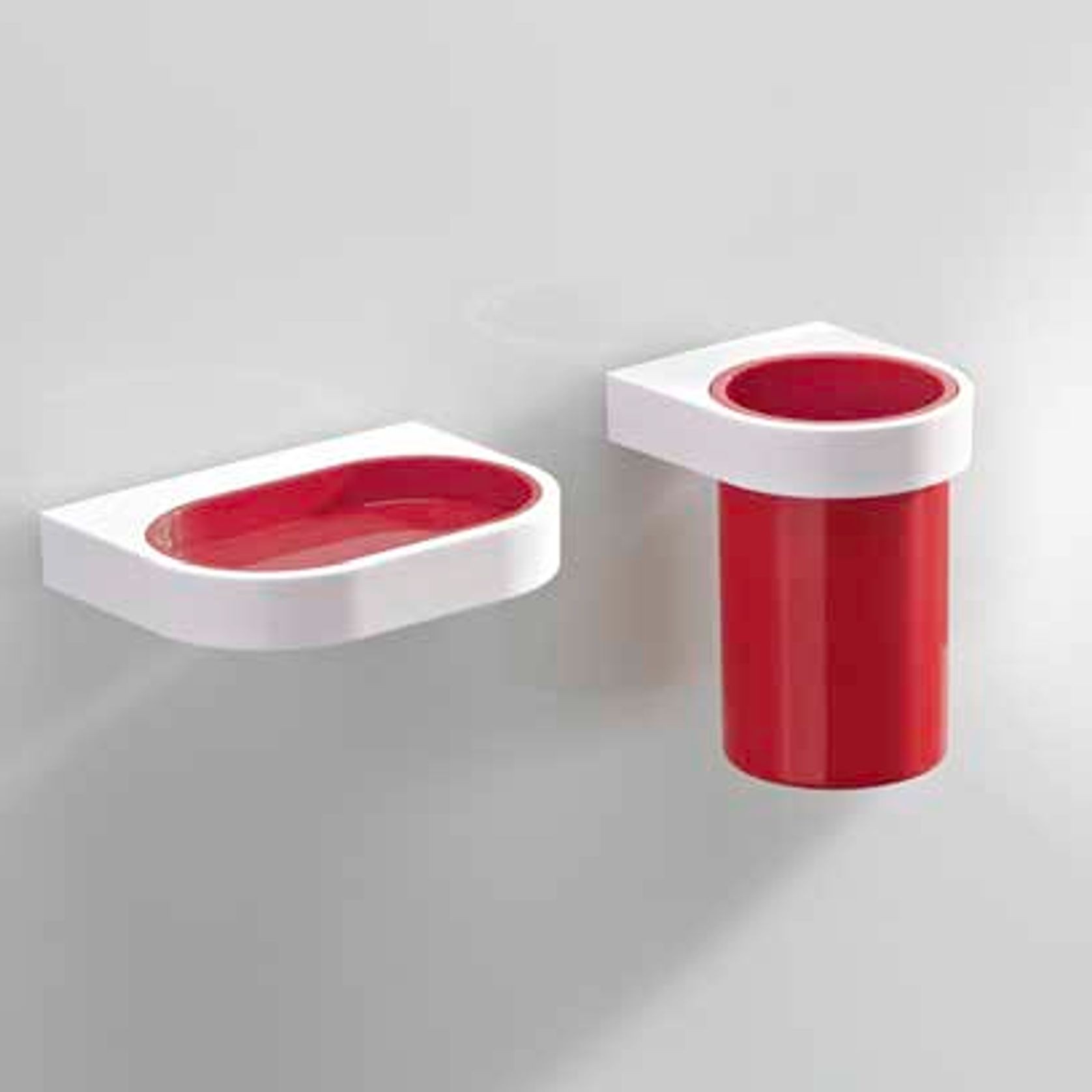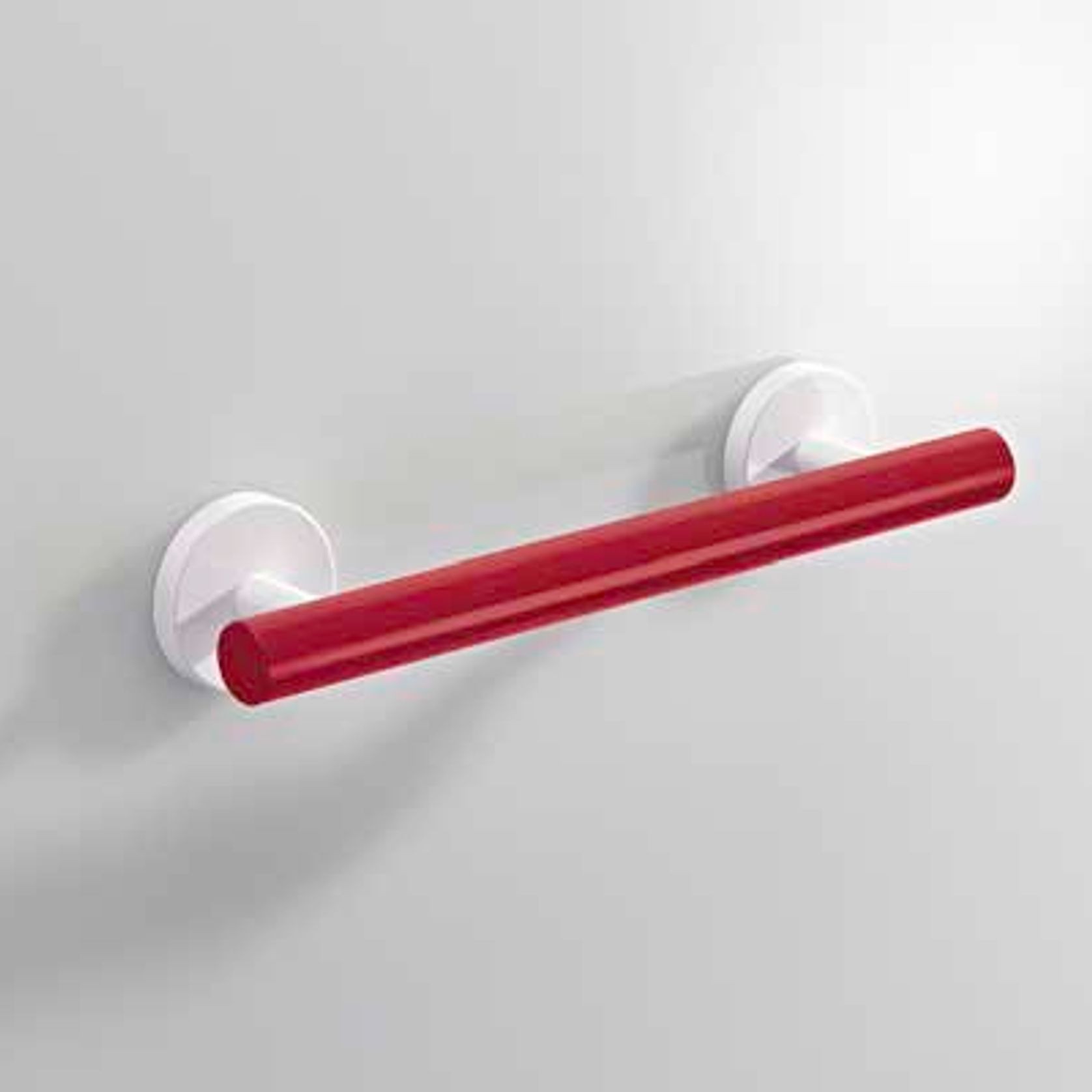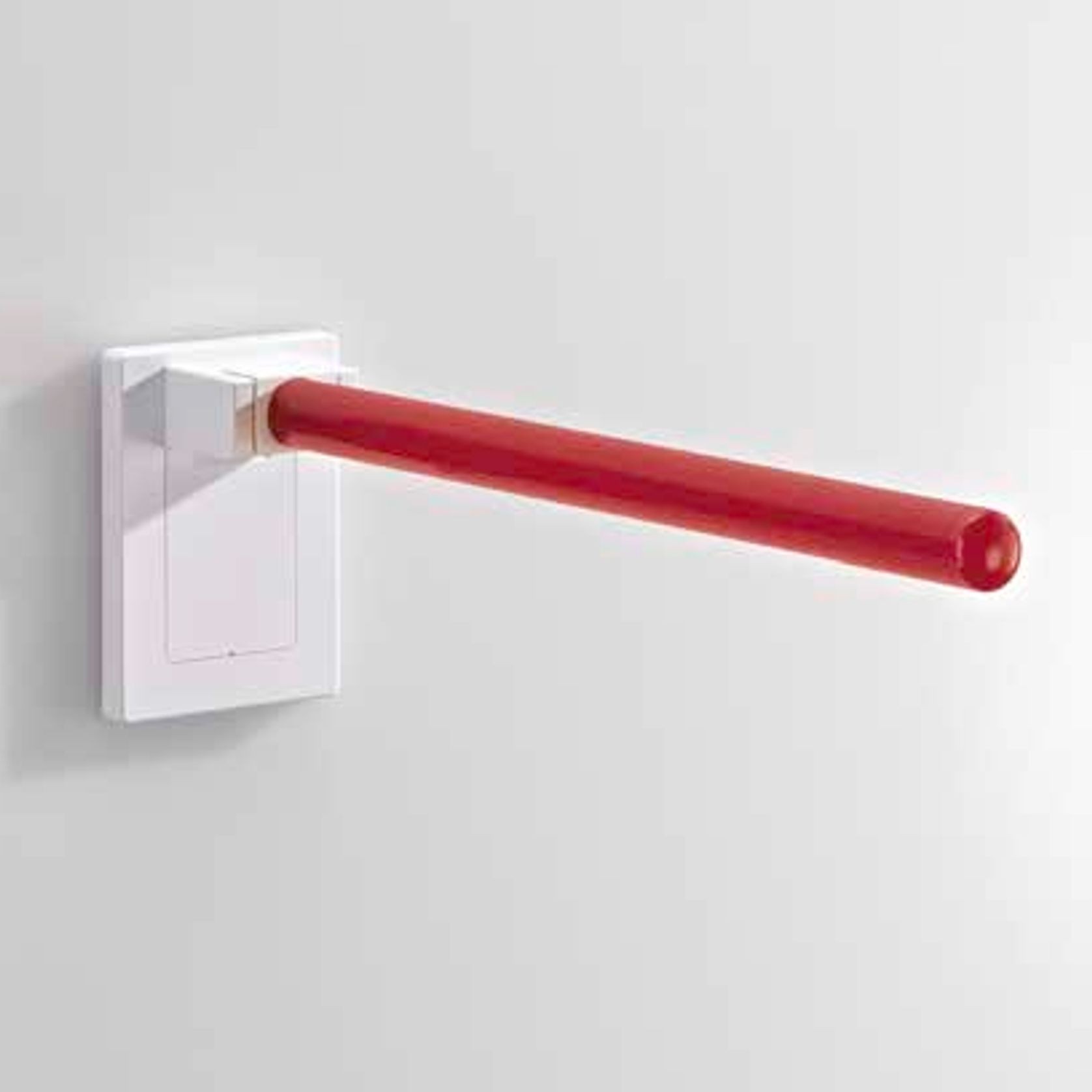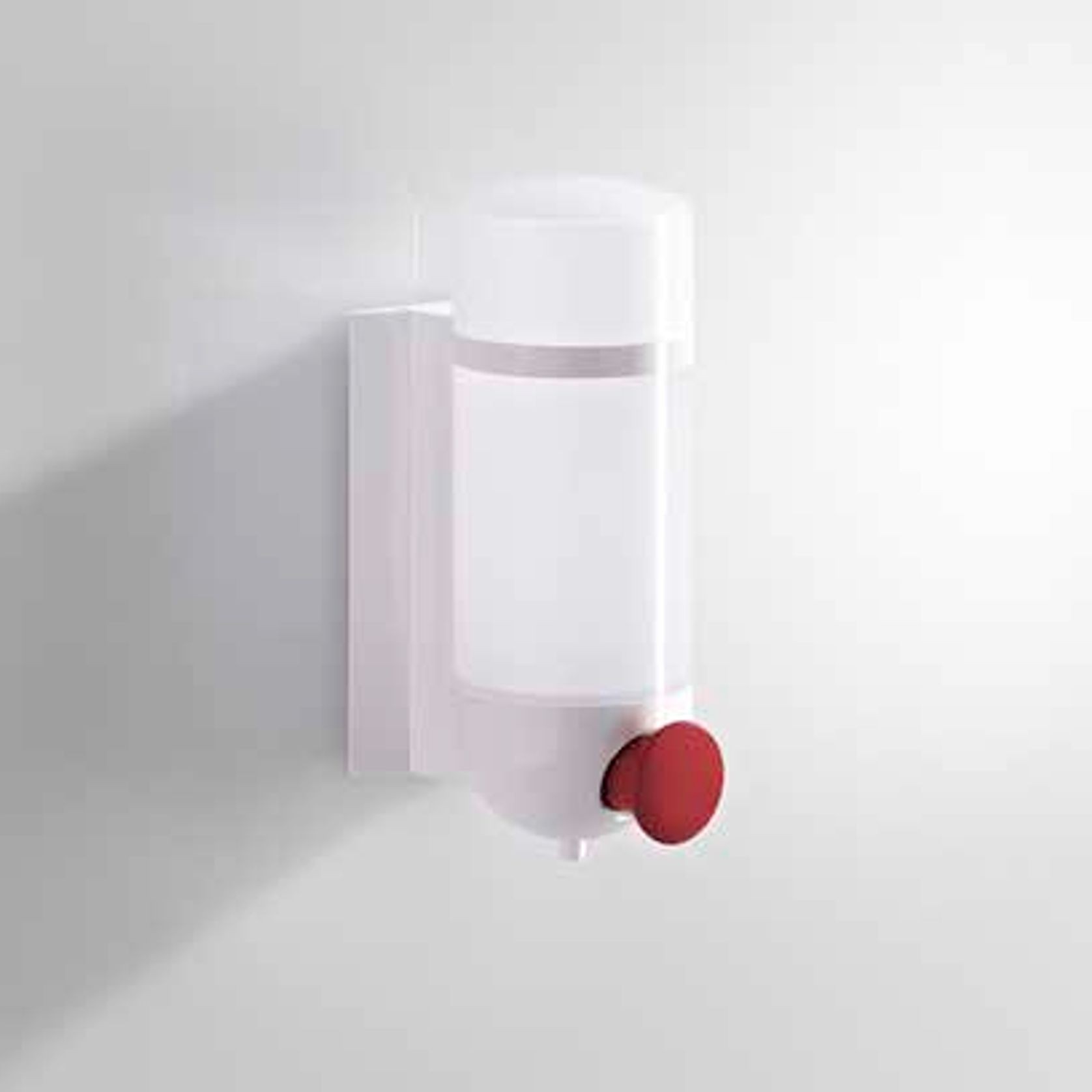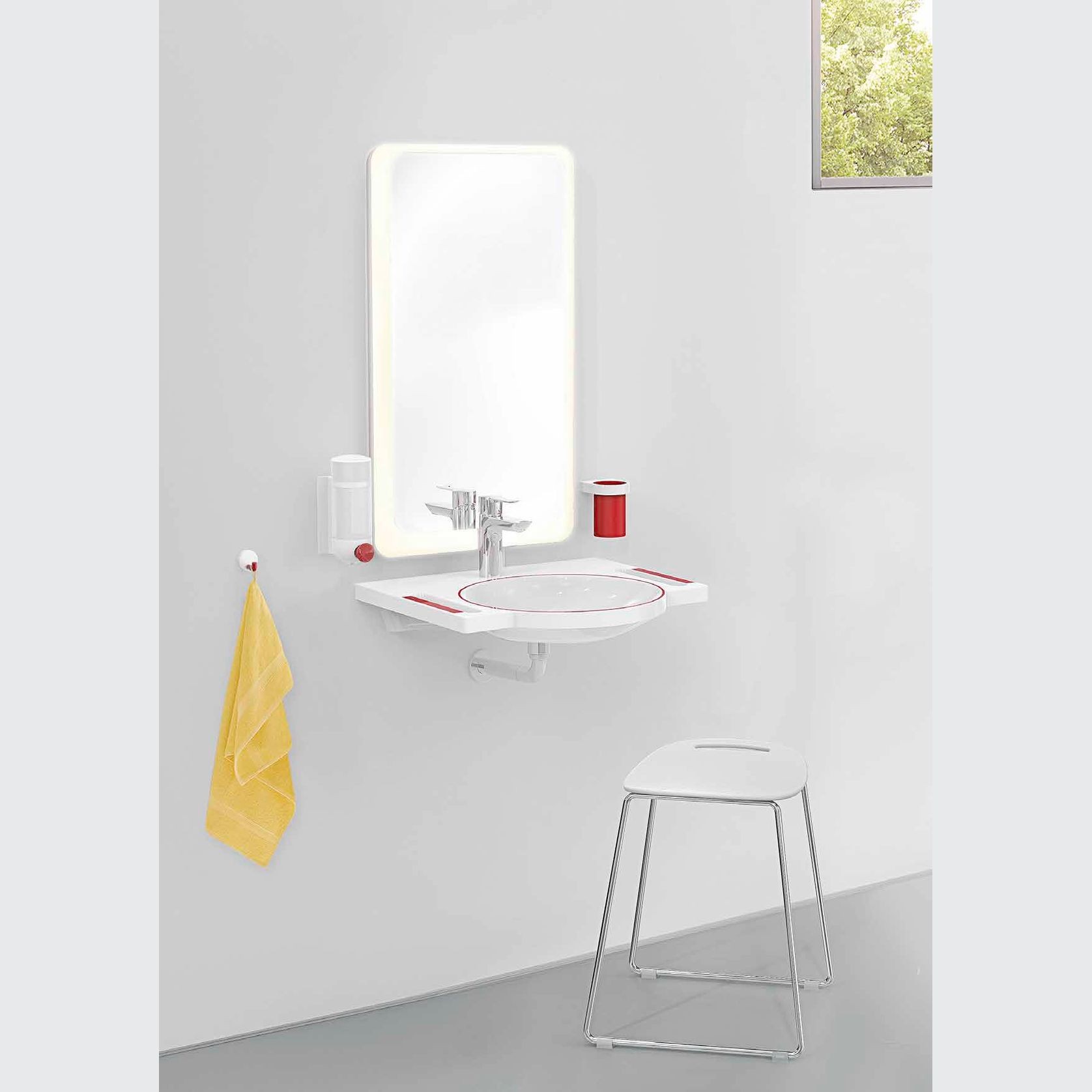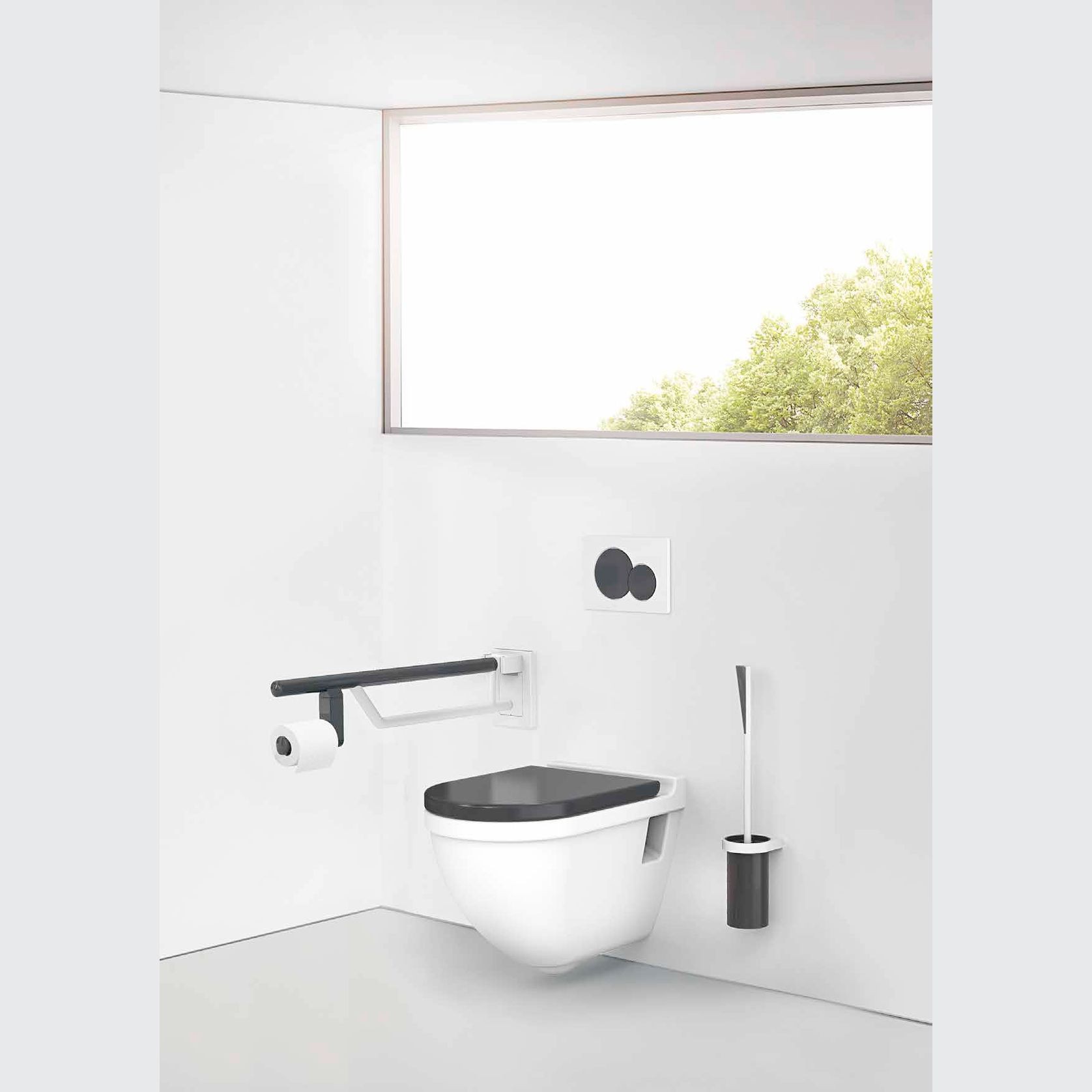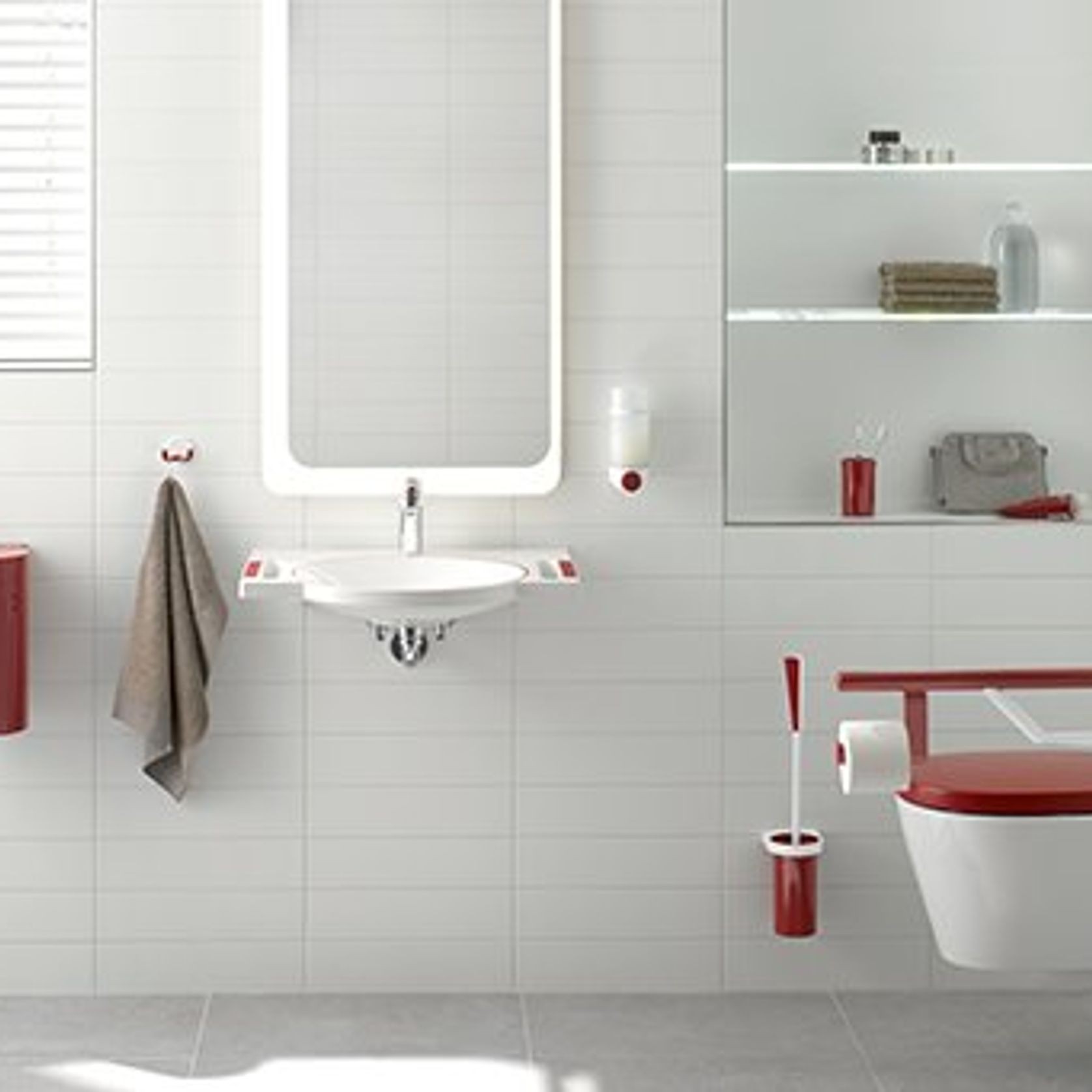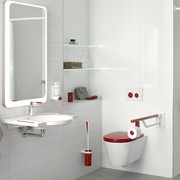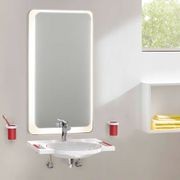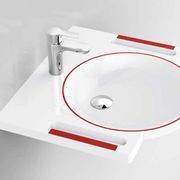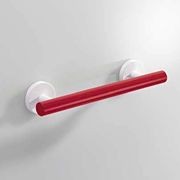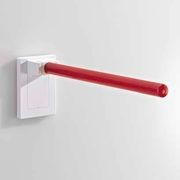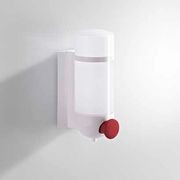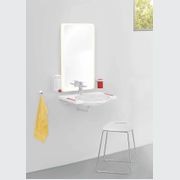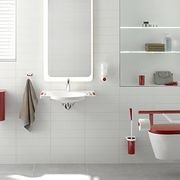HEWI - Dementia Sensitive Design
Around 9 million people in Europe currently live with dementia. By 2030 there will be up to 14 million people with dementia. Apart from symptoms such as forgetfulness or speech disorders, the illness is also reflected in the affected persons increasing inability to orientate themselves. This particularly limits their independence. Different design concepts have a deliberately created, clearly structured environment as an attempt to give dementia structures an orientation aid and therefore to assist them in their independence.
CONTRASTS PROVIDE ORIENTATION
For example, coloured contrasts can be used to structure a room and to facilitate the perception of the environment for someone with dementia. HEWI has developed
a washbasin as well as matching sanitary accessories and accessibility products in line with these design requirements.
INCREASE WELL-BEING
Another concept is based on increasing the patients’ well-being. The spatial environment should compensate for limitations and give a person with dementia a feeling of safety and security. The surroundings should be designed to that they are inviting for patients and their relatives. If the structure of a room is easy to understand it assists orientation and therefore promotes independence.
People with dementia are limited in their everyday skills, they suffer from orientation problems. Various pilot projects indicate that deliberately used colour contrasts facilitate orientation and therefore promote the independence of the persons concerned. Together with the architect Dr. Birgit Dietz, HEWI has developed an age and dementia-sensitive washbasin. This has red markings in the functional areas
(washbasin bowl and slotted gripping handles), in order to facilitate three-dimensional perception of the product and to signal correct use.
Qualitative studies show that the colour red is most easily perceived by patients with dementia and as the disease progresses it is the colour perceived for the longest time. Red is also the most easily registered colour for people with age-related impaired vision or inoperable eye diseases, for example, macular degeneration. Apart from the washbasin, HEWI offers accessories and accessibility products that have been designed according to the same principle. Only the functional areas are highlighted with a highly contrasting colour, for example, on the soap dispenser only the push-button for dispensing the soap is coloured.
Light reflection value (LRV)
Our vision worsens continuously with age. This is caused amongst others by increasing yellow discolouration and turbidity of the eye lens. Diminishing vision is one of the main causes of falls by old people. The orientation of older people with impaired vision and especially people with dementia can be assisted by clear colouring and unambiguous contrasts.
Coloured contrasts, for example, can be used in the bathroom so that the accessories are clearly distinct from the background. In this way a coloured toilet brush or soap dispenser in front of
a white wall becomes easy to perceive, even for a person with reduced vision. As a rough rule of thumb, colours with a low light reflection value produce the highest contrast to a white wall.
The intensity of the contrast always depends on the colour of
the product and the colour of the background. The contrast va-lue can be defined theoretically with the help of the light reflection value (LRV). A precise calculation of the actual contrast effect must always be determined in situ, as the lighting can change it considerably. Visit www.hewi.com/light-reflection-value for further information on the light reflection value.
www.hewi.de/lrv-wert | www.hewi.com/light-reflection-value
A change in location, for example, a stay in hospital or moving into a care home, mean enormous stress for people with dementia. In the hospital or care home they are no longer in their familiar surroundings. The change in their daily routine and unknown people around them make people living with dementia insecure. They often respond with aggressive behaviour, restlessness, states of anxiety or withdraw into themselves completely. Dementia-sensitive design of his surroundings creates clear structures and serves as an orientation aid for the person with dementia.
A homely designed bathroom gives the person with dementia a feeling of familiarity as it reminds him of their home. Materials such as chrome and the use of subtle colours, as are often found in the private bathroom, create a feel-good atmosphere.
Light, glare-free illumination of the bathroom also enhances this effect. On the one hand, it increases the feeling of well-being for the person with dementia and on the other hand, it serves as an orientation aid, as the ability to perceive the objects in the room is made considerably easier.
Warm Touch
By increasing the feeling of well-being, the independence of people with dementia is also encouraged. Accessibility prod-ucts provide support for people with limitations and provide safety for the user. High-quality materials and a clear design create an attractive, homely atmosphere that invites the user to feel good. WARM TOUCH products are especially good for this. WARM TOUCH is an innovative material, which has the visual high-gloss appearance of chrome and haptically corresponds to the properties of polyamide. The round tubular design enables symmetrical gripping. Assistive sup-port systems for the washbasin, WC and shower are available, for example, hinged support rails and support rails.
Planning Example
Dementia-Sensitive Bathroom Design
Sanitary rooms are often designed so that the washbasin and the mirror above it are within the field of view on entering the bathroom. This is problematic for people with a diagnosis of severe dementia, as they can no longer recognise themselves in the mirror and therefore conclude that the sanitary room is already occupied.
PLANNING & DESIGN RECOMMENDATIONS: WASHBASIN
· The mirror and washbasin should be arranged so that they are not noticed immediately on entering the room
· Possibly do without a mirror or conceal it, if the per-son with dementia no longer recognises himself in it or thinks that the person in the mirror is a stranger
· Integrated support rails on the washbasin increase the user’s safety
· Wheelchair accessibility enables seated use of the washbasin or use with a wheelchair
· Single lever mixer taps as fittings facilitate the use
TOILET
Arrange the WC so that it is noticed directly on opening the door; this facilitates orientation and increases independence.
ACCESSORIES
Emphasising the functional elements through coloured contrast promotes orientation and therefore the independence of the user.
A layout in which the view recognises the WC first on opening the door is particularly recommended. Bright lighting with few shadows and a highly contrasting de-sign also help people with dementia to retain their independence.
- CategoryBathroom, Bathroom Accessibility, Bathroom Shelves, Bathroom Mirrors, Robe Hooks
More from
SA Plumbing Supply
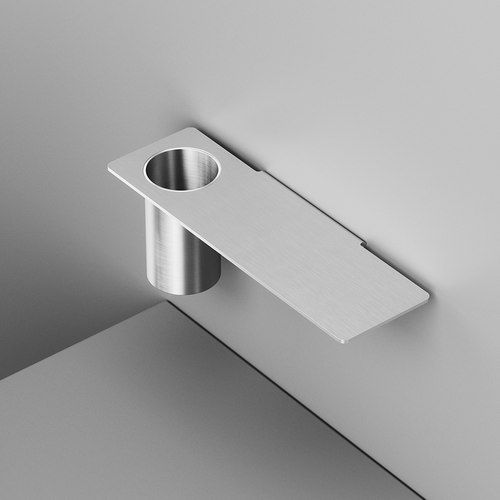
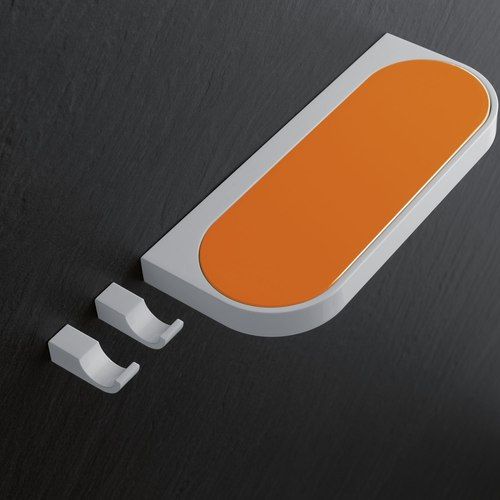
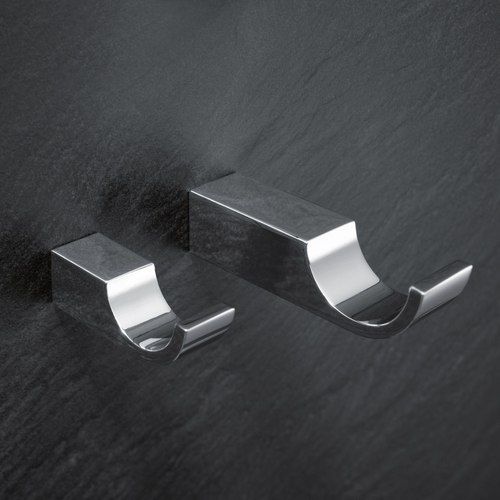
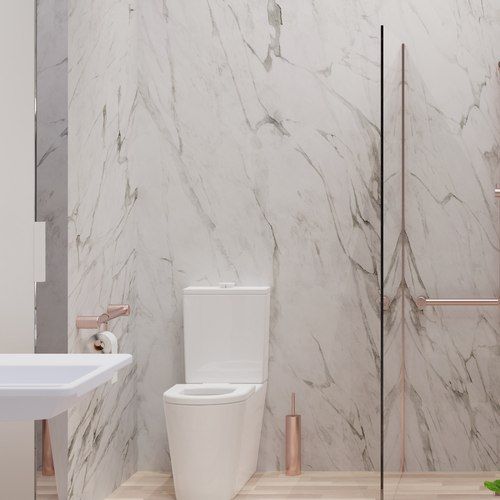
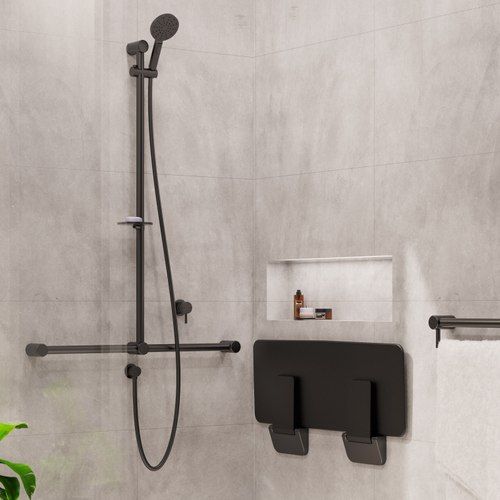
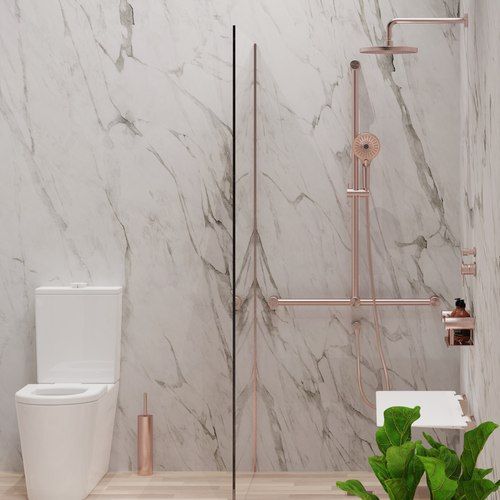
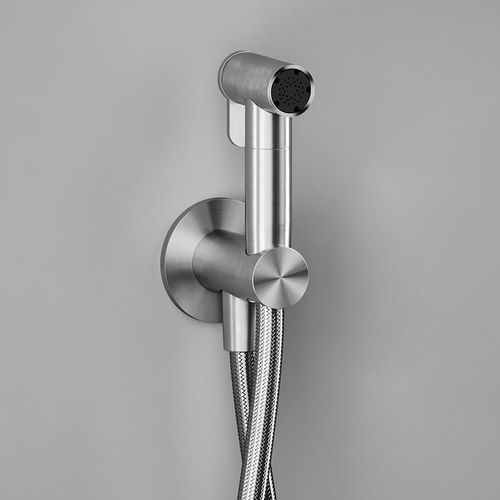
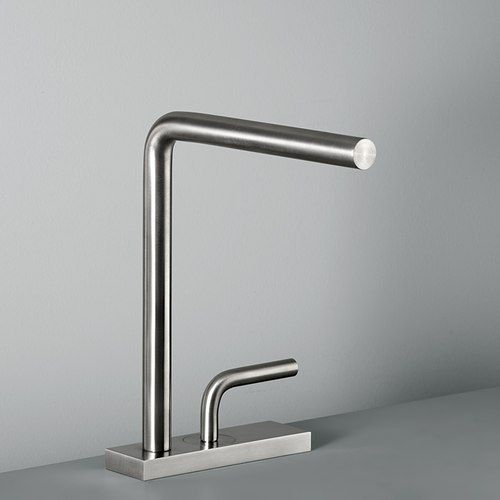
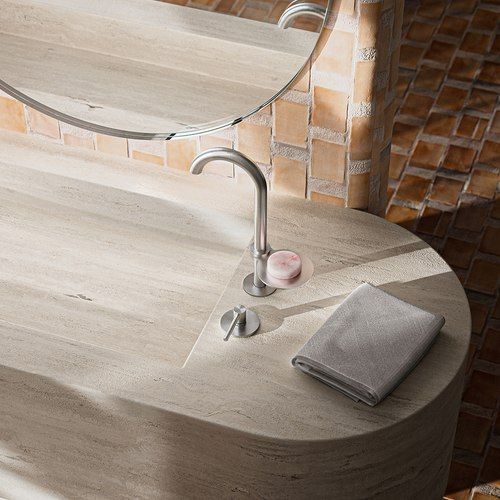

About the
Seller
Established in 1951 as manufacturer representatives, this third-generation family-owned company has a continuing policy of representing specialist manufacturers of quality products for the plumbing and marine industries. SA Plumbing Supply's parent company - Shipwright Agencies Ltd - experienced the marine sector weakening toward the end of the 1990s and thus diversified into the plumbing sector, specialising in niche products that were a point of difference from the norm.
In early 2014, Shipwright Agencies Ltd created a new brand - SA Plumbing Supply Ltd - to convey a name that had greater relevance to the plumbing industry. We are a small boutique company where you receive personalised service that goes the extra mile to get the best products without paying for an arm and a leg.
Quadro (Italy) was the first brand onboard during the Shipwright Agencies era in early 2000, specialising in stainless steel tapware with highly architectural origins and is Green to boot.
Over the years, SA Plumbing Supply has sourced quality European brands to introduce to the New Zealand market. Director Sean Paterson regularly travels to European Trade Shows, such as Salone del Mobile in Milan and ISH in Frankfurt, to ensure SA Plumbing Supply is at the forefront of leading product procurement.
In 2015, SA Plumbing Supply began marketing Goman (Italy) as a specialist supplier of accessible bathroom products that changed the perception of the disability market (accessible doesn't need to be ugly). Subsequently 2017, Hewi (Germany) increased the market share of highly architectural accessible products by introducing the System 900 range, which has set the standard for Hotels and luxury homes.
2018 saw the introduction of the Cinier range of Olycal Stone Radiators and LED Lighting. Cinier's Olycal Stone Radiators serve a functional purpose and double as art and lighting.
Following the ISH Trade Show of 2019, SA Plumbing Supply became the NZ distributor for EverLife Design (Italy) and Pellet (France). EverLife Design, in particular, has been well-received for its original concepts and simple lines.
In the winter of 2019, the Universal & Accessible Bathroom Design brand was created to address the bigger picture of Universal Design in the home. This showcases the best of all brands and looks for any budget.
- ArchiPro Member since2019
- More information



